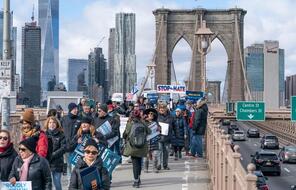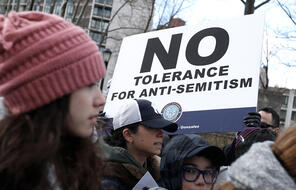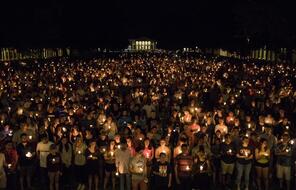The 1951 Refugee Convention and Protocol
At a Glance
Language
English — USSubject
- Social Studies
- Antisemitism
The 1951 Convention contains a number of rights and also highlights the obligations of refugees towards their host country. The cornerstone of the 1951 Convention is the principle of non-refoulement contained in Article 33. According to this principle, a refugee should not be returned to a country where he or she faces serious threats to their life or freedom. This protection may not be claimed by refugees who are reasonably regarded as a danger to the security of the country or, having been convicted of a particularly serious crime, are considered a danger to the community.
Other rights contained in the 1951 Convention include:
- The right not to be expelled, except under certain, strictly defined conditions (Article 32);
- The right not to be punished for illegal entry into the territory of a contracting State (Article 31);
- The right to work (Articles 17 to 19);
- The right to housing (Article 21);
- The right to education (Article 22);
- The right to public relief and assistance (Article 23);
- The right to freedom of religion (Article 4);
- The right to access the courts (Article 16);
- The right to freedom of movement within the territory (Article 26);
- The right to be issued identity and travel documents (Articles 27 and 28).
Some basic rights, including the right to be protected from refoulement, apply to all refugees. A refugee becomes entitled to other rights the longer they remain in the host country, which is based on the recognition that the longer they remain as refugees, the more rights they need.
What rights does the 1967 Protocol contain?
The 1967 Protocol broadens the applicability of the 1951 Convention. The 1967 Protocol removes the geographical and time limits that were part of the 1951 Convention. These limits initially restricted the Convention to persons who became refugees due to events occurring in Europe before 1 January 1951.
Does a refugee also have obligations?
Refugees are required to abide by the laws and regulations of their country of asylum and respect measures taken for the maintenance of public order. 1
- 1Excerpted from “The 1951 Convention Relating to the Status of Refugees and Its 1967 Protocol,” Geneva: UNHCR, 2011, accessed August 24, 2016.
How to Cite This Reading
Facing History & Ourselves, “The 1951 Refugee Convention and Protocol,” last updated January 5, 2017.
This reading contains text not authored by Facing History & Ourselves. See footnotes for source information.













